The culture and traditions of French Polynesia are part of what makes The Islands of Tahiti such an interesting and popular destination. Here are some features of that culture that you should be aware of when you visit.

1
Dialects spoken in French Polynesia
Although French and Tahitian are the two official languages of French Polynesia, there are various different dialects spoken in the outer islands, such as Marquesan in The Marquesas Islands and Paumotu in the Tuamotu and Austral Islands. These languages have similarities with the languages spoken in Hawaii, New Zealand, Samoa, Tonga and Easter Island. The different dialects help in tracing the migration routes of the original Polynesians.

2
Pu Fenua: burying the placenta
In Polynesian tradition, the placenta (pu fenua in Tahitian) of the newborn baby is buried at the foot of a tree, to symbolize the link between man and earth. This tradition is very much alive in The Islands of Tahiti, where the placenta is often buried at the foot of a fruit tree.

3
Traditional wedding
Traditional Polynesian weddings are full of symbolism and in Bora bora and Moorea, the ceremonies adhere to tradition as far as possible. The happy couple dress in their finest garments and jewelry, with crowns and garlands of brightly colored flowers. They are united by a priest after he’s paid homage to the gods and then recited the ancestral family histories of the wedding couple. After the ceremony, there is a feast or a banquet, with music and singing into the early hours.
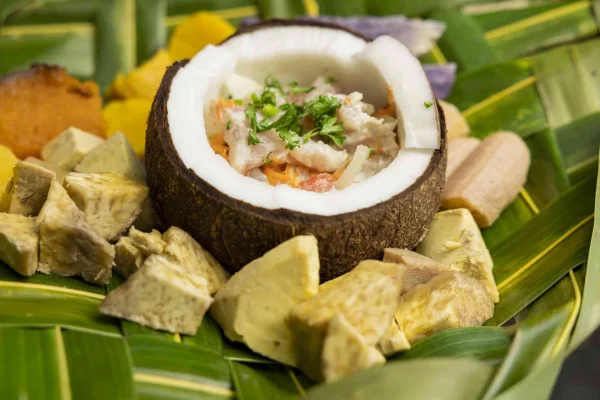
4
Polynesian cuisine
Culinary specialities vary from island to island. The ka’aku, a dish made from ‘uru (breadfruit) is a typical dish of the Marquesas Islands. Poi, a taro based dish is popular in the Austral islands. And in the Tuamotu Islands, avaro traditional bread is served on important occasions. Polynesian cuisine is an important part of the traditional culture in The Islands of Tahiti.

5
Tattooing
For centuries, tattooing has been an integral part of Tahitian culture and has now become a worldwide fashion. In French Polynesia, each tattoo design has its own precise significance. Certain designs belong to a particular family lineage, others show the wearer’s origins, social status or even occupation.
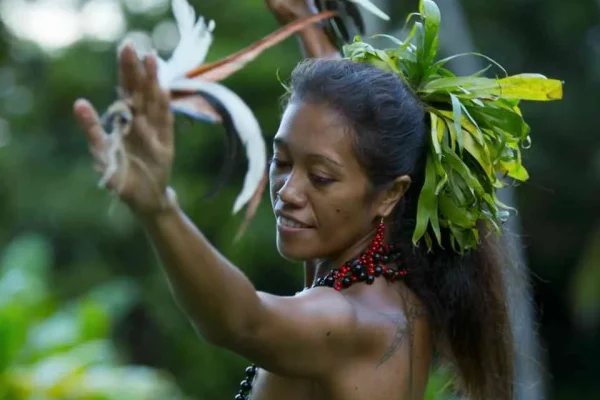
6
Traditional song and dance
In The Islands of Tahiti, dance spectacles offer an exciting and colorful insight into traditional Polynesian culture. The dances vary in certain islands, notably the Marquesas Islands where the haka manu (bird dance for women) and the haka puaka (dance of the pig for men) are unique to that archipelago. In French Polynesia, traditional songs and dances are part of every celebration, festival or party.

7
The secret Arioi religion
In the Society Islands, especially Tahiti, there was once a religious order called the Arioi. It consisted of dancers, healers and artists and had enormous influence on Polynesian culture.
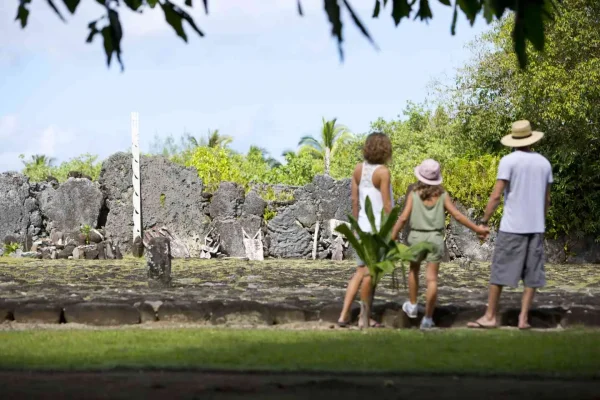
8
The Marae of Taputapuatea
Located on the island of Raiatea in the Society Islands, the marae of Taputapuatea is the birthplace of the Polynesian civilization and culture. It is the heart of the giant octopus at the center of the Polynesian Triangle which connects New Zealand, Hawaii and Easter Island. It is the most sacred site in French Polynesia.

9
The importance of Tiki
The tiki (or ti’i in Tahitian) isn’t a simple decorative object, it is a mysterious and sacred sculpture in stone or wood. It is forbidden to touch the tiki on the marae archelogical sites.

10
Totem animals
Most families in French Polynesia have an animal totem such as a shark, a dog or a centipede. Called a taura’a in Tahitian, a totem animal protects and brings strength and power to the family. Some families have a vegetal or mineral taura’a.
Thematics

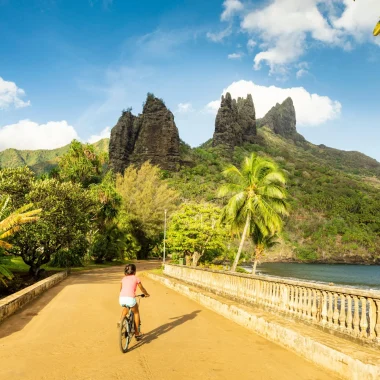

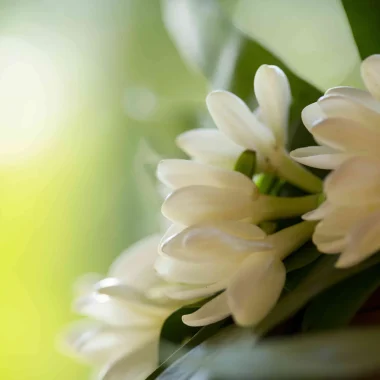





 Australia
Australia
 Belgique
Belgique
 Brasil
Brasil
 Canada (EN)
Canada (EN)
 Canada (FR)
Canada (FR)
 Chile
Chile
 Deutschland
Deutschland
 España
España
 France
France
 Italia
Italia
 Mexico
Mexico
 Polynésie française
Polynésie française
 New Zealand
New Zealand
 Schweizerisch (DE)
Schweizerisch (DE)
 Suisse (FR)
Suisse (FR)
 United Kingdom
United Kingdom
 United States
United States
 한국
한국
 中国
中国
 日本
日本